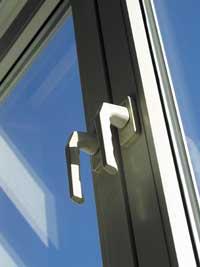Cable against submarine elements
2011/05/01 Roa Zubia, Guillermo - Elhuyar Zientzia Iturria: Elhuyar aldizkaria

The sea can be an obstacle. In general, it is a major obstacle in the world of communication. The transmission of a message from one end to the other from an open sea has been a slow process in history; the XIX. Until the mid-twentieth century, speed was marked by boats. But, then, the man began to place submarine cables.
Today, the oceans are full of cables. They transport telephone, internet and energy between the continents. Some are extremely long; in the Pacific, the cables connect the United States and Australia, and the installation that surrounds Africa connects Europe with Southeast Asia. They constitute a global underwater network.
But length is not the most remarkable feature of submarine cables. These cables are located at the bottom of the sea, so they must be adapted to the extreme conditions of the deep sea.
Those who sank the first cable, from the American Telegraph Company, had to pay ignorance. On August 16, 1858, a cable was inaugurated between Ireland and Newfoundland, which ceased its connection three weeks later. The last message indicated that transatlantic businesses were willing to start by cable.
The problem was the shape of the seabed. They had a map of the bottom of the Atlantic, but very little detailed. It was a map of 200 surveys across the Atlantic representing a large plateau at the bottom of the sea between Ireland and Newfoundland. For this purpose, a cable was installed in a backdrop without plateaus. In addition, the materials were unsustainable.
Materials and materials Materials
The sea is salted and, of course, is filled with water, a combination of salt and water, corrosion and oxidation. In addition, in the marine bottom the water pressure is very high. Therefore, in a submarine cable, the material that transports the data must be protected and maintain the pressure.
The cables used on earth are also protected by corrosion and oxidation that produces the air itself. In copper cables, for example, almost any insulating plastic polymer serves as protection. In most wires, at least those used in everyday life, the plastic coating is made of PVC, since when PVC burns there is a very striking - and beneficial - effect. When burning releases hydrochloric acid, very strong acid and reactive, but which in turn turns off combustion. Therefore, the degradation of PVC itself is the one that stops the fire, which is self-extinguishing. Therefore, it is the ideal polymer to deal with the elements in those cases in which the element is related to fire.
On the seabed cables, on the contrary, the situation is very different, there is no high risk of fire of the cable, but the pressure to which it is subjected is enormous. By pressure, any polymer is not used to protect the heart of the cable. The PVC itself does not serve. It is an amorphous polymer whose long molecules are mixed as spaghetti and the polymer has flexibility as these molecules have freedom of movement. This structure similar to spaghetti is compressed by pressure and when it is very large, the molecules cannot be moved. The polymer becomes rigid and fragile and breaks.
The solution is to use polyethylene, another conventional polymer. Polyethylene is also formed by long molecules, but most are not mixed as spaghetti, but regularly ordered. Its structure is crystalline and the pressure increases this order. In these conditions, polyethylene is rigid but not fragile, ideal for carrying out a submarine cable.
Specifically, in the submarine Internet cables, the outer layer of protection is made of polyethylene. It is the first protection of optical fiber that connects two continents. But it's just the first, a submarine ADSL cable can be 30 centimeters thick and its X-ray is a demonstration of the latest technology. They consist of seven protective layers, which can be polymer, metal or metallized polymer, such as Mylar tape.
The technology of cable installation systems is also surprising. Google, for example, has installed many underwater cables through diver robots: the latest technology to adapt to sea conditions.
But, why should we make that technological effort? The Internet cabling network has thirteen major links around the world, which weakens the system both in front of the elements and in front of sabotage (in 2008 six links failed within a week). Another option to overcome sea conditions is to avoid the output of cables. Internet by satellite.
Satellites have great fame, but they are no more efficient than cables. The other way around. It is a very expensive communication (like satellite telephony) and very slow. The response time of the satellite, latency, is very large. An example: broadband has just arrived in Cuba, with the cable brought from Venezuela. So far, Cubans have had to use the Internet by satellite. The cable will increase up to 3,000 times the data transmission speed.
It is clear that it is worth developing technology to adapt to sea conditions and embarking long cables.

Gai honi buruzko eduki gehiago
Elhuyarrek garatutako teknologia






